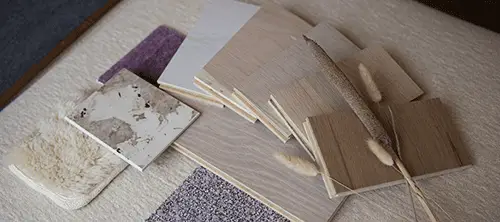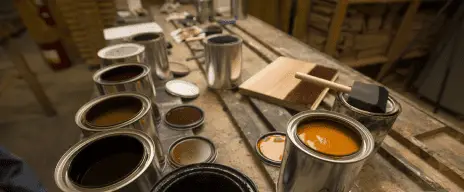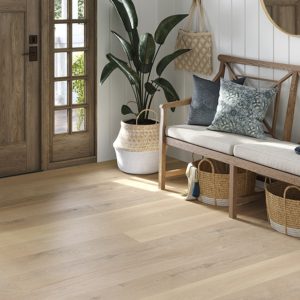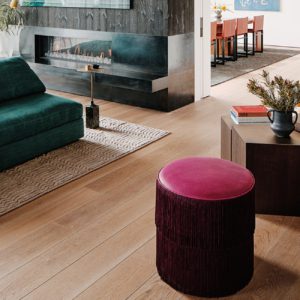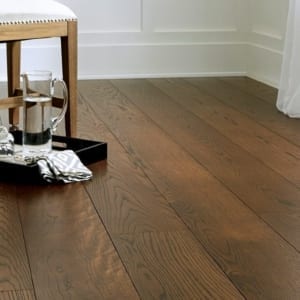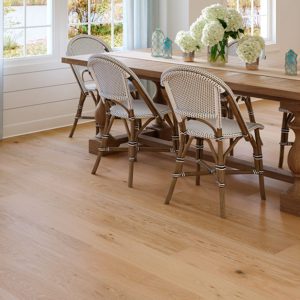Wood Cladding is Back and It’s Better Than Ever
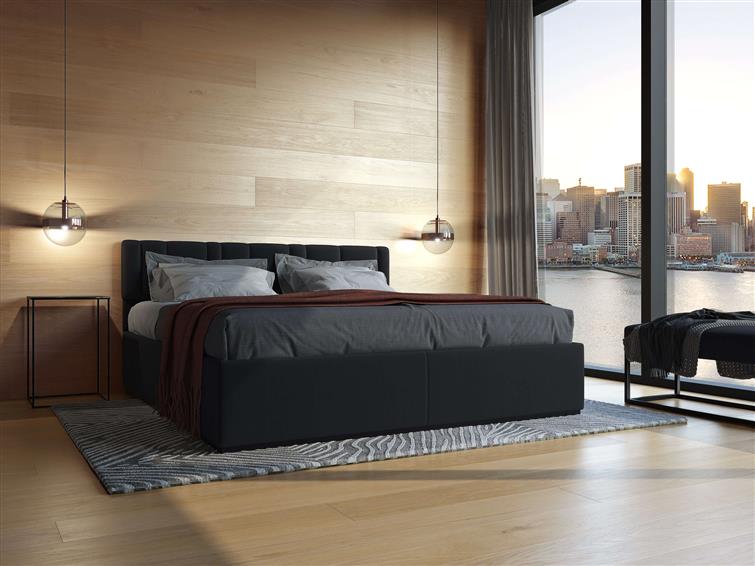
As one of the main building materials in use today, natural wood is prized for its beauty, hardiness and ability to transform a space. While we’ve long been accustomed to the idea of using wood on the outside of homes, internal wood-paneled walls have the unfortunate reputation of being dark, dated and generally unfavorable in modern home design. Conjuring up visions of dingy rooms, low ceilings and claustrophobic interiors, composite paneled walls are usually the first to go when spaces are slated for renovation.
Like most trends from the past, it was inevitable that someday wood cladding/paneling would make a comeback. And like it or not — the time is now.
Presently available in a rainbow of colors, beautiful textures and crafted from sustainable, green materials, contemporary wood cladding is fresh, chic and inviting. With the power to open up a space, change the look and feel of a room, and wow with everything from a spa-like Zen to a rustic charm, modern wood cladding/paneling is a vibrant, unique choice for the stylish homeowner. It can be a beautiful option for adding natural elements to your space.
The history of wood cladding
For hundreds of years, homebuilders have relied on wood cladding to create safe and sturdy structures in which to work, live, and raise families. Early American settlers constructed log cabins out of wood and earth; using the wattle and daub method for creating long-lasting, weather-tight structures. Across the pond, European villagers relied on the post-and-timber building to construct their villages and towns, gleaning materials from nearby forests for building materials. Historians have dated many of these ancestral, cladded structures as far back as the 16th century.
These early clapboard homes were made primarily from cleft softwoods. The word clap is derived from the Dutch phrase klappen, which means to split. These hand-cut beams were the standard for many years until timber mills made commercially-produced lumber more readily available. Because professionally processed wood was more uniform, affordable, and less labor intensive to create, hand-hewn building materials quickly fell out of fashion.
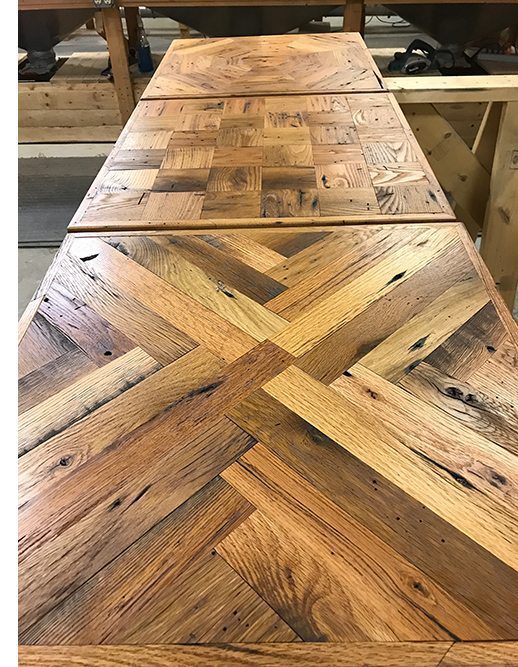
As building practices evolved and urban societies developed, more hardy construction like steel, concrete and stone began to take over. As cities sprung up and suburban communities developed, society once again sought a way to reconnect their homes with nature. For this, they turned to paneling.
It is hard to say exactly when wood paneling came back into fashion, but many people credit the design aesthetics of the mid-20th-century Modernist movement. Rejecting the sometimes cold and buttoned-up palette of the 1950s, the Post-Modern age set about bringing the outdoors in. It was not surprising — with the embrace of natural materials, large windows, and a sweeping enthusiasm for the environment — then wood was back; and this time, everyone wanted it.
As the demand for affordable wood paneling rose, manufacturers sought new, creative ways to bring less expensive wood products to the masses. Cutting corners, they relied on fiberboard, laminate and composite materials to meet the demand. Far from the beautiful hardwood paneling of the past, the surplus and relative cost-effectiveness of this new product meant that cheap, imitation-wood paneling was everywhere once again; much to the dismay of future homeowners.
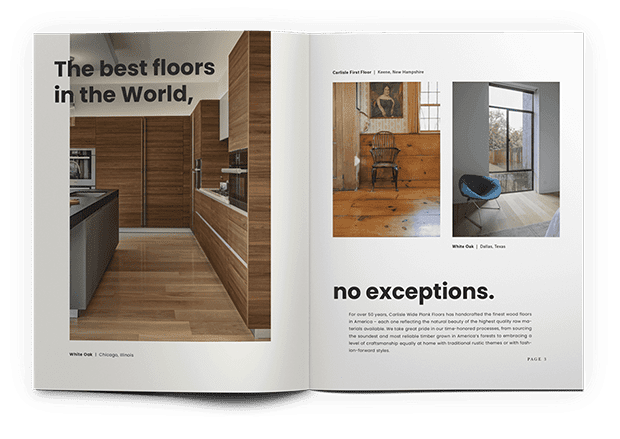
Endless Inspiration for the Floor of Your Dreams
GET DESIGN BOOKWhere are we now?
Today, there are many options when it comes to picking the perfect wood paneling. No longer limited to the particle board slats of the past, designers can pull from a world of eco-friendly choices. One of the most sustainable is reclaimed wood. It is not only abundant and affordable but can also add an element of rustic texture into a contemporary space. Eco-conscious designers embrace this material for its unique characteristics and ability to combine both an earthy and modern style.
Clad your room with panels in a similar texture and tone for a neutral statement like storm gray or weathered pine or go wild with multi-colored boards in a similar contrasting color family. If you want a more classic look, and the size of the room can support the color, go dark. Unlike retro wood paneling of the past, dark wood can look rich and inviting when done with mindful intention.
Go with polished mahogany in wide planks, or choose large wood tiles in a modern shape. If you really want to make a splash, focus only on one location. By keeping the paneling in a singular area, it will draw the eye and act as a statement piece, rather like a large painting or gallery wall.
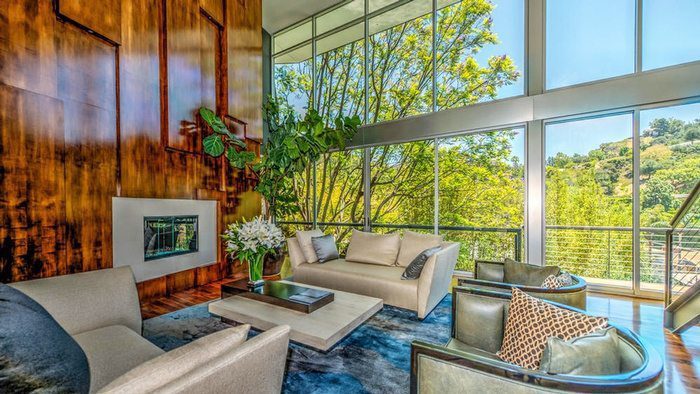
If you’re in the mood for texture, remember paneling doesn’t have to be flat. Contemporary tongue and groove flooring can be perfect for walls, but always get a professional to do the installation. Because tongue-and-groove hardwoods are slotted together and installed floating on top of the subfloor they aren’t nailed or glued down but merely attached to each other. You cannot run a floating format on a wall, but you can still use the tongue-and-groove system.
Another option is to use hand-scraped wide planks. With plank formats in general, you will need to allow for slight spacing between the wood pieces to accommodate for expansion. During warmer months, there is a possibility that the wood could buckle, warp and potentially pop off the wall from pressure if not cared for in the proper way. But as a general rule, if you take proper care, almost any type of hardwood can be used on a wall with designs limited only by your imagination.
Custom Installations and more
With all the beautiful options out there, it would be a shame to limit your paneling just to the walls. Modern wood cladding can be used in any area of the home, including the ceiling, bathrooms and bedrooms.
- Divide a large space into different living areas with a custom horizontal wood screen to act as a physical barrier between the zones
- Create a free-standing rustic focal point in an open-air space
- Pair a paneled wall with textural art to increase the acoustic quality of the room
- Incorporate planks that include a live edge for a more organic feel
Narrow or wide, dark or light, rustic or polished — by taking into account the color, texture, and feel of the wood, the possibilities for creativity are endless. Paneling can be beautiful and long-lasting and it can add character, warmth and interest to any space in which it is installed.
– – – – – –
